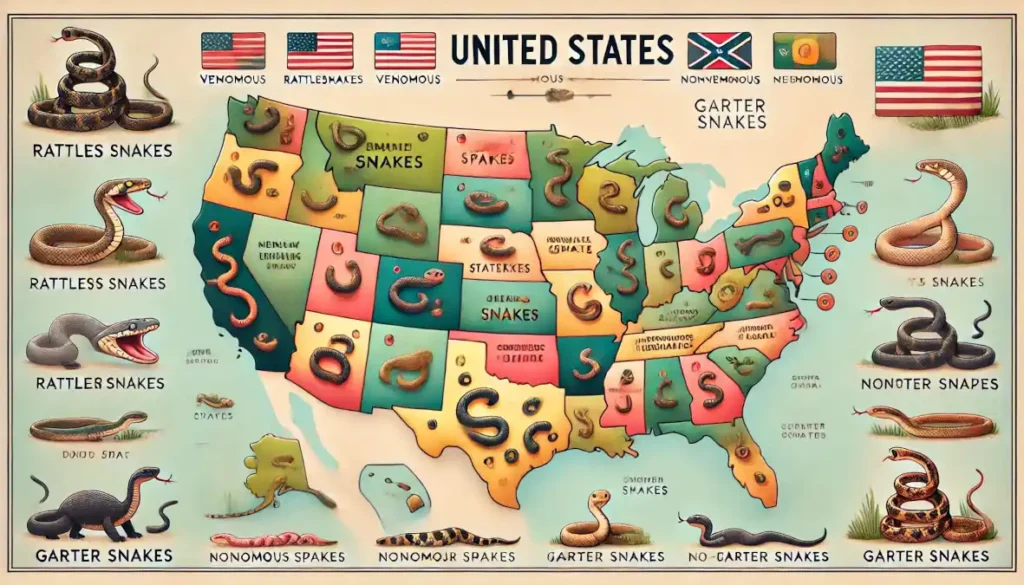Are Snakes a Winter Threat? What You Didn’t Expect to Learn
When winter arrives, most people stop worrying about snakes. It’s easy to think they’ve all disappeared under the snow, right?
Well, not quite! These slithering creatures don’t just vanish in the cold—they have their own ways of surviving the winter.
In fact, they might even surprise you by showing up when you least expect it.
So, should you be concerned about these reptiles in the winter? The answer might surprise you.
Let’s uncover the truth about these sneaky creatures and learn how they handle the frosty months.
Explore how this exemption benefits service workers and businesses!
Where Do Snakes Go in Winter?
Snakes are cold-blooded animals, which means they can’t keep their bodies warm like we do. Instead, when temperatures drop, they go into a special kind of hibernation called brumation. It’s like they slow down their whole body to save energy.
But where do they hide during this time?
- Underground Hideouts: They dig deep into the ground or use animal burrows to stay warm. Rock crevices, logs, or even caves become their refuge.
- Human Spaces: Sometimes, these creatures sneak into basements, crawl spaces, or woodpiles near homes because those places stay a little warmer.
Here’s a fun fact: Many snakes share their hideouts with others. They don’t mind snuggling up with companions—sometimes even from different species!
Surprising Winter Snake Encounters
Even though these creatures are less active in winter, they’re not completely asleep. On warm winter days, when the sun is shining, they might come out to warm up. Imagine walking outside on a chilly but sunny day and spotting one basking on a rock or in your yard. It can happen!
Why do they come out? Sunlight is essential for their bodies to function properly, even in the colder months.
It’s rare, but some people have spotted these slithering creatures during mild winter days, especially near rocky areas or forests.
So, while you might think snakes are completely gone in winter, keep an eye out—they could surprise you!
Are Snakes a Winter Threat?
Now, let’s answer the big question: should you worry about snakes in winter? The good news is that they’re usually pretty calm and sluggish during this time. They’re not out looking for trouble and only bite if they feel scared or threatened.
But there are still some situations where you might encounter one:
- Accidental Disturbances: If you’re cleaning out a shed, picking up firewood, or gardening, you might accidentally wake up a brumating snake. It might strike out of fear, even though it’s slow.
- Hiding Spots Near Homes: They might crawl into warm spots like under porches or inside woodpiles. That’s why it’s important to be cautious when working around these areas.
Safety Tips:
- Wear gloves when handling outdoor materials, like firewood or debris.
- Keep your yard tidy and free of piles where snakes might hide.
- Seal cracks or gaps in your house to prevent these creatures from sneaking inside.
Even though winter bites are rare, it’s smart to be cautious, especially if you live in areas with venomous species.
The Role of Snakes in Winter Ecosystems
Even in the quiet of winter, snakes play an important role in nature. They’re not just hiding—they’re helping!
- Pest Control: While hunting less, their presence helps keep pests like mice away from their dens.
- Helping the Ecosystem: A den becomes a mini-ecosystem, shared by bugs, frogs, and other small creatures, maintaining balance even in winter.
So, even when tucked away, snakes are still hard at work helping the environment.
Snakes Across the U.S.: Common Species and Danger Levels
Snakes live all over the U.S., but the types you’ll encounter and how dangerous they are depend on where you are. Here’s a guide to some states and their most common species:

-

 Best Picks10 months ago
Best Picks10 months agoDriving Insurance: Get the Best Car Coverage Without Overpaying
-

 Best Rewards3 months ago
Best Rewards3 months agoBest rewards credit cards in 2025 for everyday use
-

 Personal Growth & Mindset1 year ago
Personal Growth & Mindset1 year agoTed Lasso Effect: 5 Goal-Setting Secrets You Must Know
-

 Career & Success1 year ago
Career & Success1 year ago30 Key Strategies for Growth: Mindset, Productivity & Wellness
-

 Personal Growth & Mindset1 year ago
Personal Growth & Mindset1 year agoMachado de Assis: This Viral TikTok Explains Why You Need to Read ‘The Posthumous Memoirs of Brás Cubas’ Now
-

 Career & Success12 months ago
Career & Success12 months agoChallenges of Not Having Goals: 5 tips to help you get started







